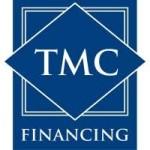Commercial & Group Insurance
Commercial Insurance
by Paul Perlite/David Hofele, Intl. ProInsurance Associates, LLC
The outlook for the Commercial Insurance sector in 2015 overall is positive. Rate reductions and increased carrier competition for most industry segments are projected for Property and Casualty insurance. Multi-family and the Construction industry will however continue to see rate increases ranging from 10-15%. The available marketplace of insurance carriers offering Multi Family insurance will constrict in 2015. Wood Frame construction projects will also experience rate increases and a limited marketplace due to recent fire losses in San Francisco and Los Angeles. Non wood frame construction projects will not be impacted and expect to see more competitive rates and wide availability of insurance carriers offering the coverage.
Flood Insurance will continue to be problematic with increased rates, more stringent underwriting and fewer carriers offering the coverage. Alternatively, Earthquake coverage has seen minor price reductions due to wider pool of carriers entering the marketplace.
The Terrorism Risk Insurance Act expired on December 31 as Congress declined to renew the act. Under the Act, the Federal Government agreed to provide additional funds for insurance claims in the event of a large scale terrorist attack. The new Congress will revisit this topic this month and determine if they will reauthorize the implementation of this coverage. Their final decision will likely impact whether insurance carriers will offer the coverage in the future.
Group Insurance
by Nina Gardner, Filice Insurance
The Affordable Care Act is now headed into its second year of full-scale implementation. Major corporate players and the health care industry believe that the ACA can’t be rolled back in any substantial way at this point. However, the newly-elected Republican members of the Senate and House seem to think otherwise. It is clear to all that at a minimum, the political debate over the ACA will continue through the 2016 presidential election.
The individual mandate went into effect on January 1, 2014, and 2014 created a lot of upheaval in the small group market as employers with fewer than 50 employers had to move to the new ACA compatible plans that proved to have higher deductibles and out of pocket maximums and be more expensive than the current plans. To avoid these new ACA plans, employer groups renewed early in 2013, and in 2014 some groups were granted transitional relief to keep their plans for yet another year.
2015 is the first year that the penalty of Employer Mandate takes effect, imposing a penalty on employers with 100 or more full-time equivalent employees who do not offer affordable, minimum value coverage to full-time employees (and their dependents). The Mandate has been delayed till 2016 for employers who have between 50 and 99 full time equivalent employees.
Although health care cost increases have been less dramatic in the last three years (hovering around 3-7%), they are still burdensome to most employers and have led many to adopt a variety of strategies to mitigate and manage health care expenses. It has become more important than ever to have a good consultant on your side to both navigate the new ACA laws and regulations and also help develop more sustainable strategies that bend the cost curve downward.














